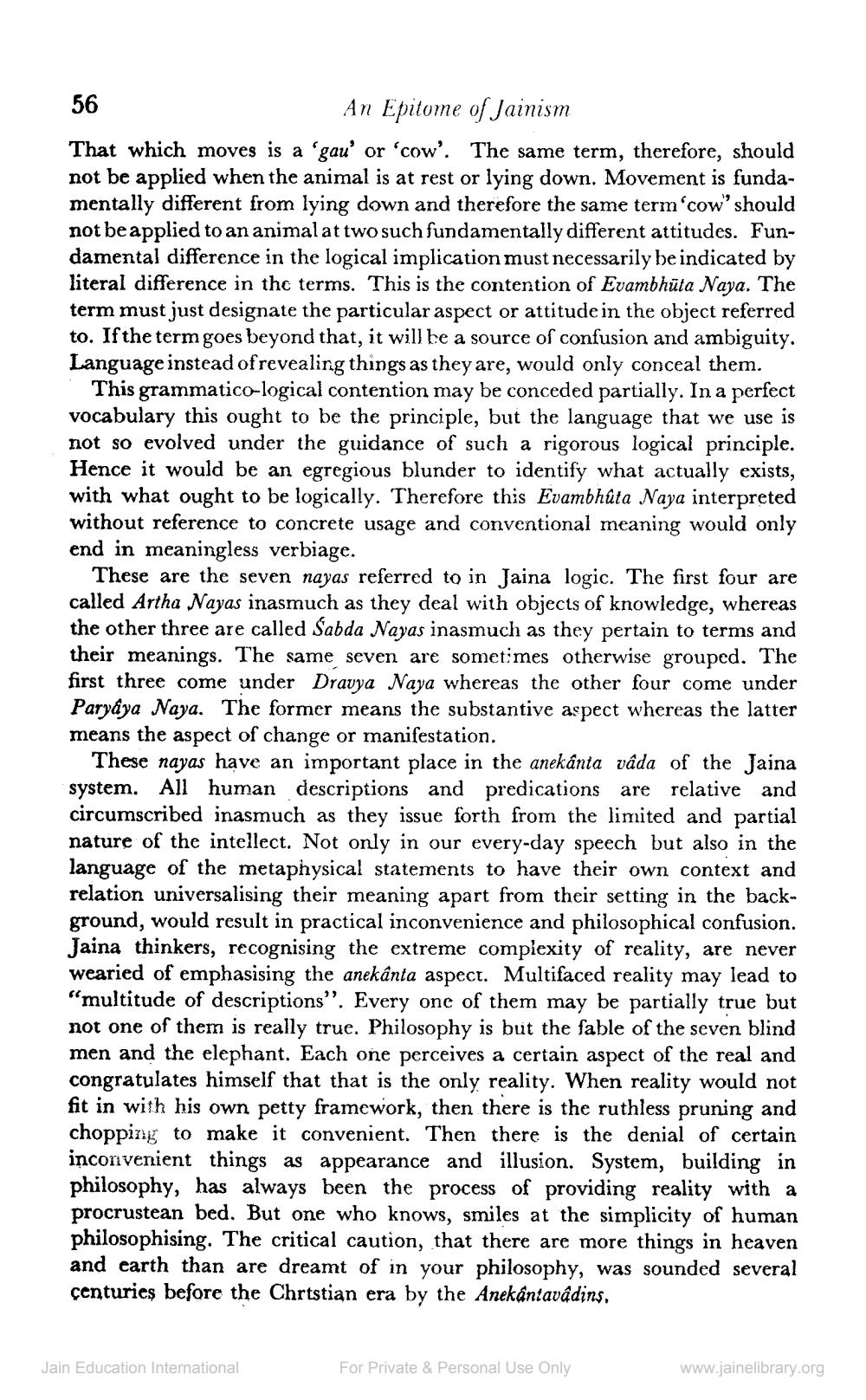________________
56
An Epitome of Jainism That which moves is a 'gau' or 'cow'. The same term, therefore, should not be applied when the animal is at rest or lying down. Movement is fundamentally different from lying down and therefore the same term'cow'should not be applied to an animal at two such fundamentally different attitudes. Fundamental difference in the logical implication must necessarily be indicated by literal difference in the terms. This is the contention of Evambhūta Naya. The term must just designate the particular aspect or attitude in the object referred to. If the term goes beyond that, it will be a source of confusion and ambiguity. Language instead of revealing things as they are, would only conceal them.
This grammatico-logical contention may be conceded partially. In a perfect vocabulary this ought to be the principle, but the language that we use is not so evolved under the guidance of such a rigorous logical principle. Hence it would be an egregious blunder to identify what actually exists, with what ought to be logically. Therefore this Evambhúta Naya interpreted without reference to concrete usage and conventional meaning would only end in meaningless verbiage.
These are the seven nayas referred to in Jaina logic. The first four are called Artha Nayas inasmuch as they deal with objects of knowledge, whereas the other three are called Sabda Nayas inasmuch as they pertain to terms and their meanings. The same seven are sometimes otherwise grouped. The first three come under Dravya Naya whereas the other four come under Paryaya Naya. The former means the substantive aspect whereas the latter means the aspect of change or manifestation.
These nayas have an important place in the anekânta vâda of the Jaina system. All human descriptions and predications are relative and circumscribed inasmuch as they issue forth from the limited and partial nature of the intellect. Not only in our every-day speech but also in the language of the metaphysical statements to have their own context and relation universalising their meaning apart from their setting in the background, would result in practical inconvenience and philosophical confusion. Jaina thinkers, recognising the extreme complexity of reality, are never wearied of emphasising the anekânta aspect. Multifaced reality may lead to "multitude of descriptions". Every one of them may be partially true but not one of them is really true. Philosophy is but the fable of the seven blind men and the elephant. Each one perceives a certain aspect of the real and congratulates himself that that is the only reality. When reality would not fit in with his own petty framework, then there is the ruthless pruning chopping to make it convenient. Then there is the denial of certain inconvenient things as appearance and illusion. System, building in philosophy, has always been the process of providing reality with a procrustean bed. But one who knows, smiles at the simplicity of human philosophising. The critical caution, that there are more things in heaven and earth than are dreamt of in your philosophy, was sounded centuries before the Chrtstian era by the Anekantavadins.
Jain Education International
For Private & Personal Use Only
www.jainelibrary.org




